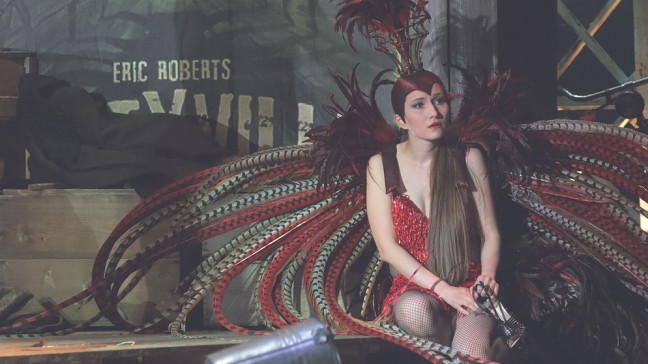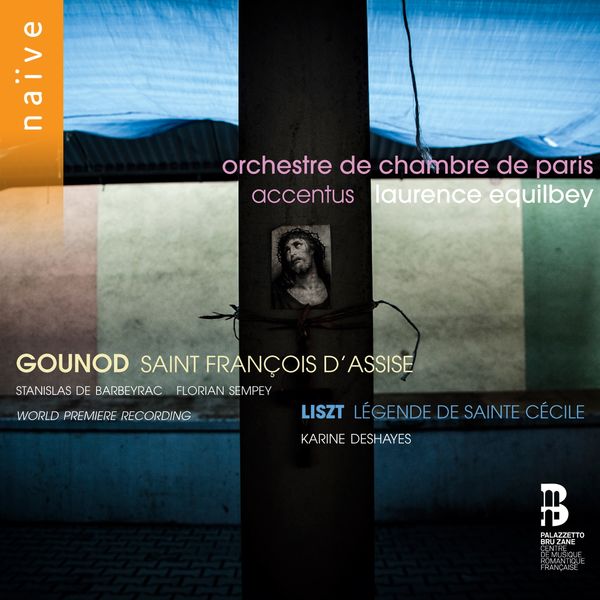 |
| Michele Mariotti |
Indeed, this can certainly be said of Mariotti's Rossini Stabat Mater., "elegant, sweet, swift, evoking the atmosphere” Like all Stabat Mater it is religious in that The Virgin Mary is mourning the death of Jesus. But it is also distinctively Rossini, stamped with his exuberant personality. At heart, Rossini was a showman. His Stabat Mater is flamboyant, but that's the way he was. Mariotti makes the piece feel personal. Catholicism uses all the senses to heighten the emotions of devotion. Flowers, incense, candles, architecture, music - all part of the mix. Like theatre ! Consider religious ecstasy, an extreme state combining spirituality and sensuality. Rossini famously said that one of the few occasions when he cried was after his mother's death. It's not hard for any one brought up Catholic not to connect the love of one's own mother with the images of the love of Mary for her Son.
From the first bars of the Introduction, the surging rhythms are vintage Rossini. The tenor appears briefly but unmistakably, to re-emerge in glory in the aria "Cujus animam gementem". Introduced by rich strings and dramatic chords, this aria could come straight out of an opera. Note the flourish on the last line "Nati poenas inclyti." which rises to crescendo and then drops to hush. Similarly the throbbing tension in the orchestra which sets the scene for the song of motherly love. Two singers, soprno and mezzo, not one, symbolizing universal motherhood but also allowing for deliciously intricate harmonies extending the interplay of two well balanced voices. The bass aria "Eja, Mater, fons amoris", is even more dramatic, suggesting power and authority. The Quartetto, which follows, feels even more reverential, the higher voices rising like angels above the lower (bass soloist leading). Tenor, sopranos and bass alternate, creating intricate patterns. The serene Cavatina gives way to a spectacular aria "Inflammatus et accensus", where the mezzo's voice soars to the heavens while the brasses blare and the full chorus declaim. Magnificent ending, percussion blazing. The second Quartetto "Quando corpus morietur" begins quietly, swelling to crescendo, soloists and chorus in unison. Paradisi gloria ! The voices surge in glorious tumult, strings, winds and brass flying, punctuated by percussion. Mary suffers, but her Son has died to redeem mankind. Brief moments of silence give way to the final chorus "Amen ! Amen ! Amen !". Rossini's Stabat Mater isn't gloomy, but he understands the liturgical purpose. With its swift "scene changes" and dramatic spirit, Rossini's Stabat Mater "is" opera.
I've met many conductors, composers, singers and directors in my time, but Mariotti struck me as being genuinely level headed, inspired by deep musicality. A genuinely nice person ! His sensitivity to Rossini is instinct, but is also grounded firmly in formal and structural discipline. “I studied composition at the Conservatorio Rossini in Pesaro" he told me, "but I didn’t want to be a composer. I wanted to understand the “science”, the technique of composition, so it would help me understand how to conduct. Composers don’t write ‘from God’, they use processes to express themselves. Rossini wrote more serious opera than comic, and he retired from opera soon after Guillaume Tell, so we have to understand that too. He is abstract, more intellectual, though you can’t compare him to Verdi, any more than you can compare Chopin to Bach”.
“I think you have to respect tradition, but you have to respect that not all tradition is good. Sometimes it can kill the character of the music. You have to keep asking yourself questions, because the world is always changing, and we can’t forever do the same things. When a composer finishes writing the score, the opera as a work of art is not finished. Every time it is performed, it lives again in new interpretation. A painting in a museum doesn’t change. But every time you go and look at it, you can see something new. You don’t go with a pencil and change the nose, the eyes or anything like that. But you are looking at it in a different way. In opera, every performance is a new way of listening, because the performers are different, and the situation and the audience are different too. So when I study a score, I need to know the tradition but also understand that there is never only one way to do it”.














